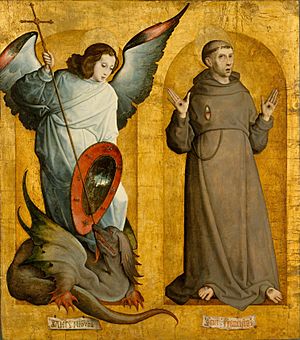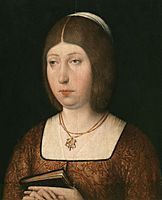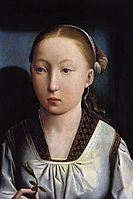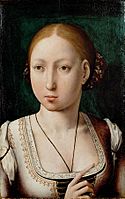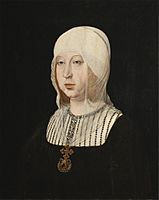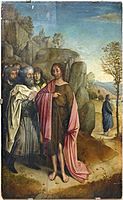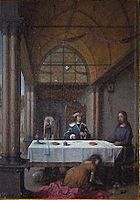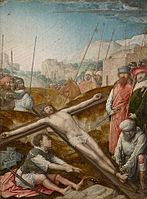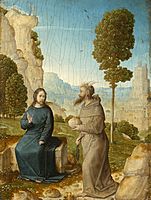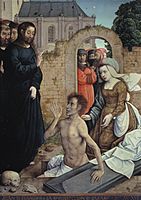Juan de Flandes facts for kids
Juan de Flandes was a famous painter from Flanders (a region in Europe) who worked in Spain. He lived from about 1460 to 1519. We don't know his real name, but "Juan de Flandes" means "John from Flanders." He painted in a style called Early Netherlandish, which was popular in his home country.
Contents
The Life of Juan de Flandes
Juan de Flandes was likely born around 1460 in Flanders. This area included parts of modern Belgium, Netherlands, Luxembourg, and France. He probably learned to paint in his home country, perhaps in Ghent. His paintings look similar to those by other artists from Ghent, like Joos van Wassenhove and Hugo van der Goes.
Working for the Queen
We first hear about Juan de Flandes in 1496 when he started working for Queen Isabella I of Castile in Spain. By 1498, he was known as the "court painter." He continued to work for the queen until she passed away in 1504.
His main job was painting portraits of the royal family. He also painted many small pictures for a large altarpiece for the queen. An altarpiece is a work of art placed behind the altar in a church. These small paintings (about 21 x 17 cm) are now spread out in different collections. Many of them are in the royal collection in Madrid.
Later Works and Religious Art
After Queen Isabella died in 1504, Juan de Flandes started painting for churches in Spain. He worked in Salamanca from 1505 to 1507. Later, he moved to Palencia, where he painted a large reredos (a screen or decoration behind an altar) for the cathedral. Records show that his wife was a widow by December 1519, meaning he had passed away by then.
Most of his paintings found outside Spain are from this later period. During this time, he focused on religious themes. For example, parts of a large altarpiece from a church in Palencia are now in the Prado Museum in Spain and the National Gallery of Art, Washington in the United States. Each museum has four panels from this altarpiece.
Juan de Flandes's Painting Style
Juan de Flandes combined the Early Netherlandish style from Ghent with Spanish tastes. He often painted many scenes in separate sections for altarpieces. He used beautiful, bright colors. His paintings show a good understanding of space and light. However, in his later works, he sometimes divided space into thin layers, which became a unique part of his style.
The famous artist Albert Durer saw Juan de Flandes's altarpiece in 1521. He was very impressed, saying he had never seen such precise and excellent small oil paintings.
Paintings
-
Christ nailed to the Cross, Vienna, also from Queen Isabella's altarpiece
-
Resurrection of Lazarus, Prado Museum, from a group of paintings for a church in Palencia.
See also
 In Spanish: Juan de Flandes para niños
In Spanish: Juan de Flandes para niños


